A counterintuitive thing about the best escape rooms in the world: Everyone escapes. As in, every team escapes every time. The satisfaction of a good puzzle comes from solving it while still feeling challenged.
This may seem a little weird if you tried your first escape room back in the early days of the business, but at some point, someone figured out that it kind of sucks if customers fail the experience, especially one that you put a lot of time making for them to enjoy.
“When people solve a puzzle, they should feel good. They should feel like, ‘I got that! I did well there!’ That’s what we try to do,” said Chris Alden, founder of Palace Games, an escape room company located here in San Francisco at our namesake Palace of Fine Arts.
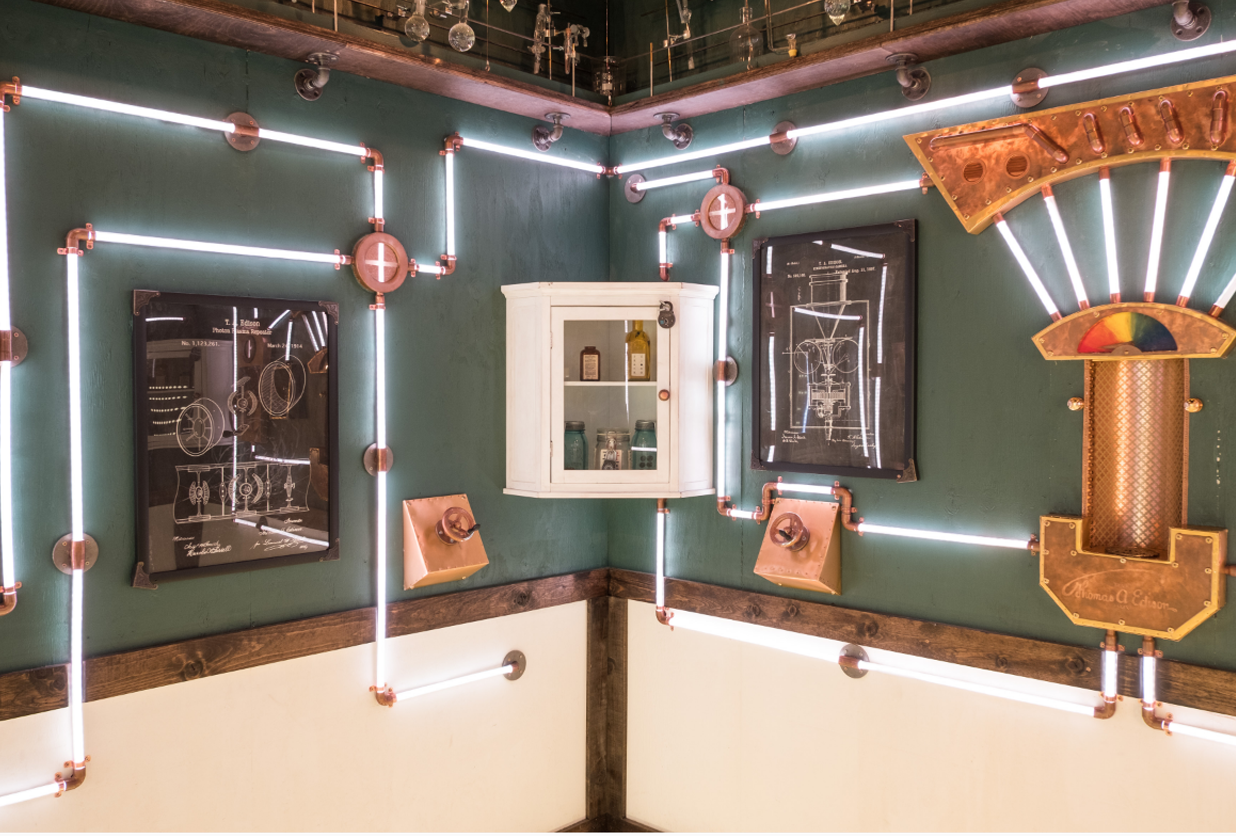
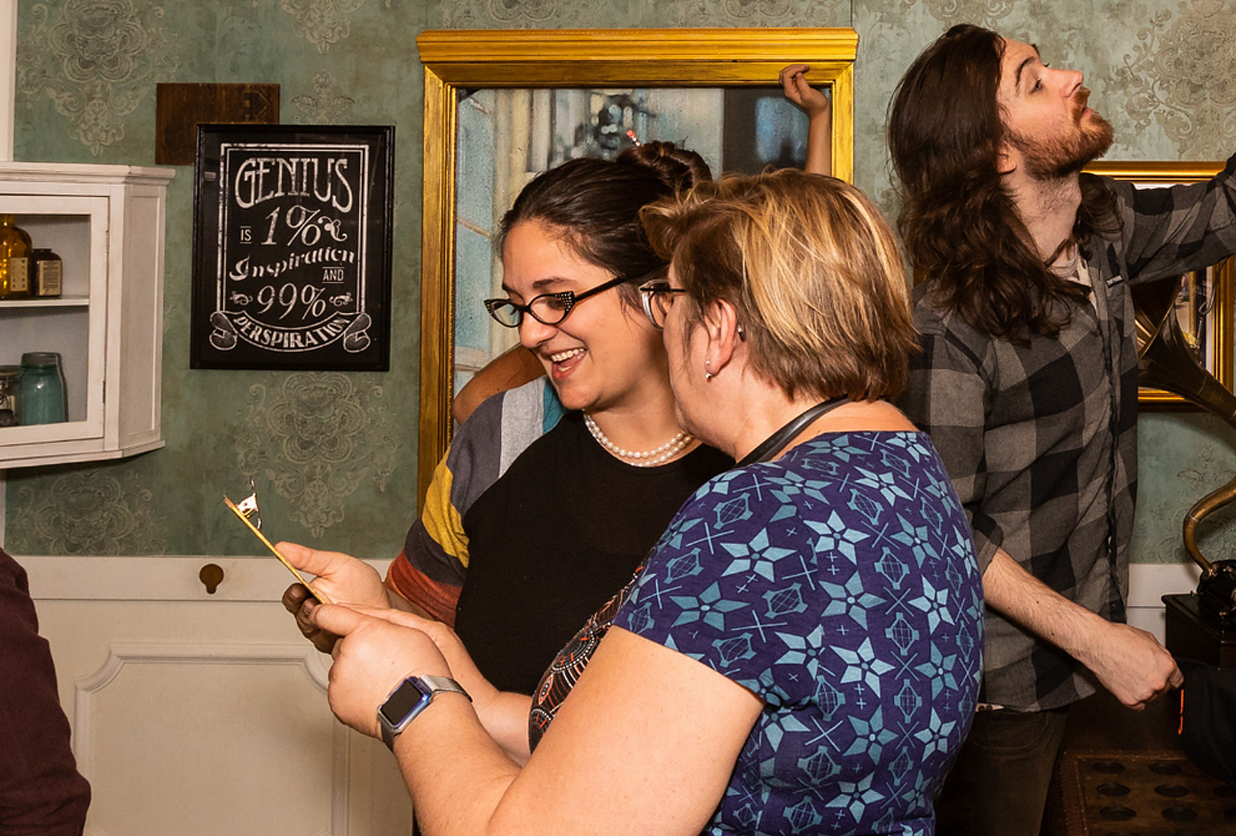

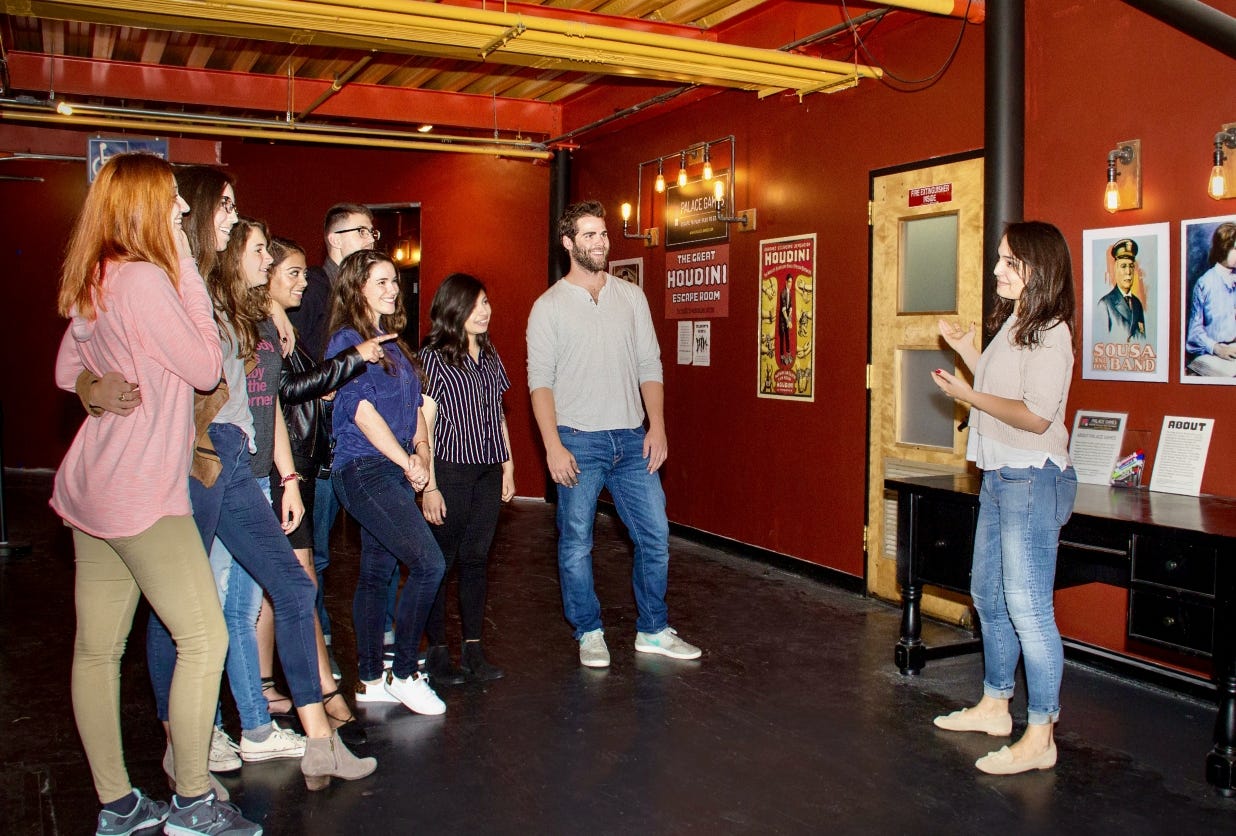
They proudly display a rank of #2 Escape Room Company in the U.S. and #5 in the world on Instagram, and yes: There are rankings. Palace Games offers four escape rooms — The Houdini room, The Roosevelt room, The Edison room, The Attraction — and now, an experience they call puzzle-golf that goes by Lollyland.
These are less simple rooms and more like experiences, which we see repeated in companies the world over; You’re not just breaking out of prison anymore, you’re saving the world. One top escape room in Spain, for example, takes players through an expansive, neon-soaked cyberpunk city, replete with killer robots and seedy ramen shops. Another has you getting out of a coffin.



So, too do we see this at Palace Games.
Each of their rooms has a distinct theme generally rooted in a real-life historical event — usually something related to the 1915 Panama-Pacific International Exposition, which the Palace of Fine Arts was originally built. Alden is drawn to these stories. The Houdini room asks what kind of puzzle challenges Harry Houdini might create for celebrity colleagues like Helen Keller and Alexander Graham Bell — all of whom were actually present at the 1915 exposition.
Inspiration for The Roosevelt room came from a real life incident where Teddy Roosevelt — having lost the presidency to Woodrow Wilson — wrote the latter a letter asking for the opportunity to help prepare America for the country’s likely entry into World War I. For modern readers, this would be something akin to Bill Clinton writing to George W. Bush asking to lead the charge in the Gulf War. “I just imagine Wilson getting this letter from Roosevelt, the former president, and just rolling his eyes,” Alden said.
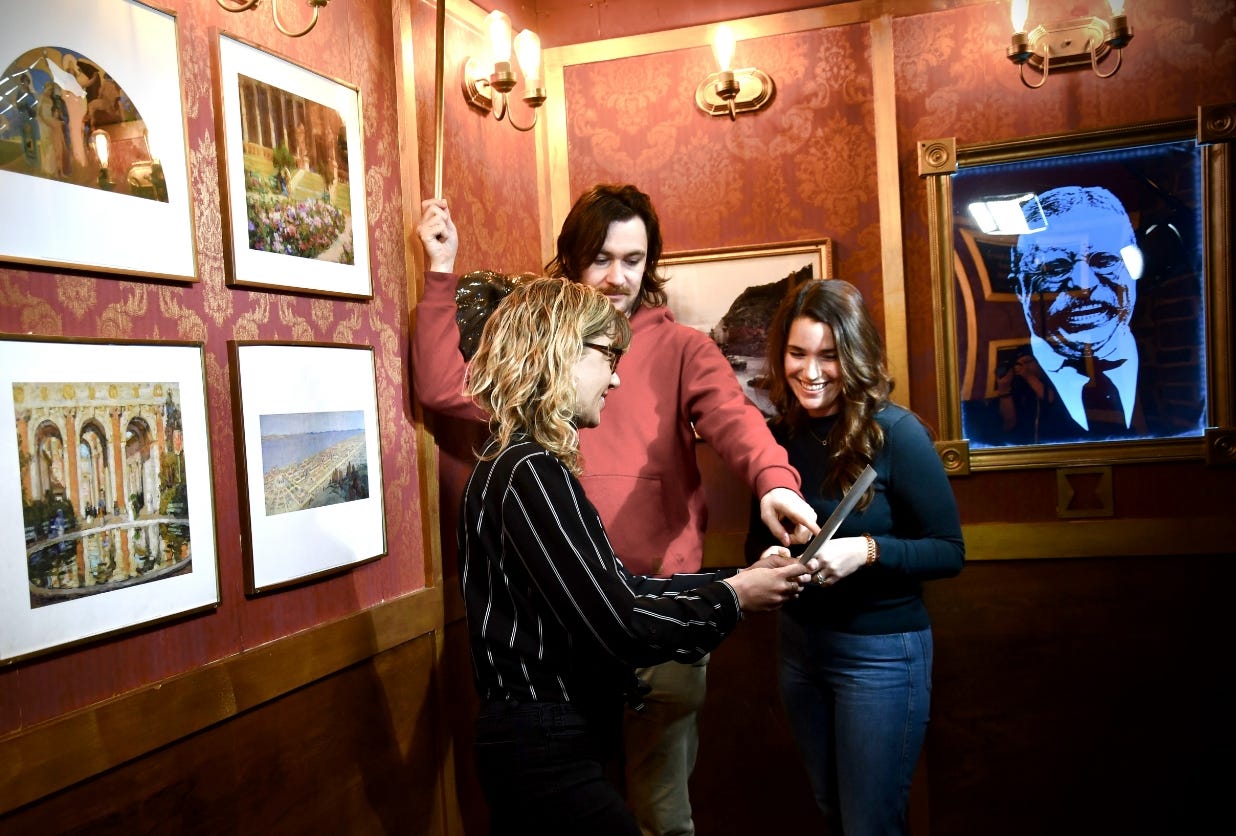
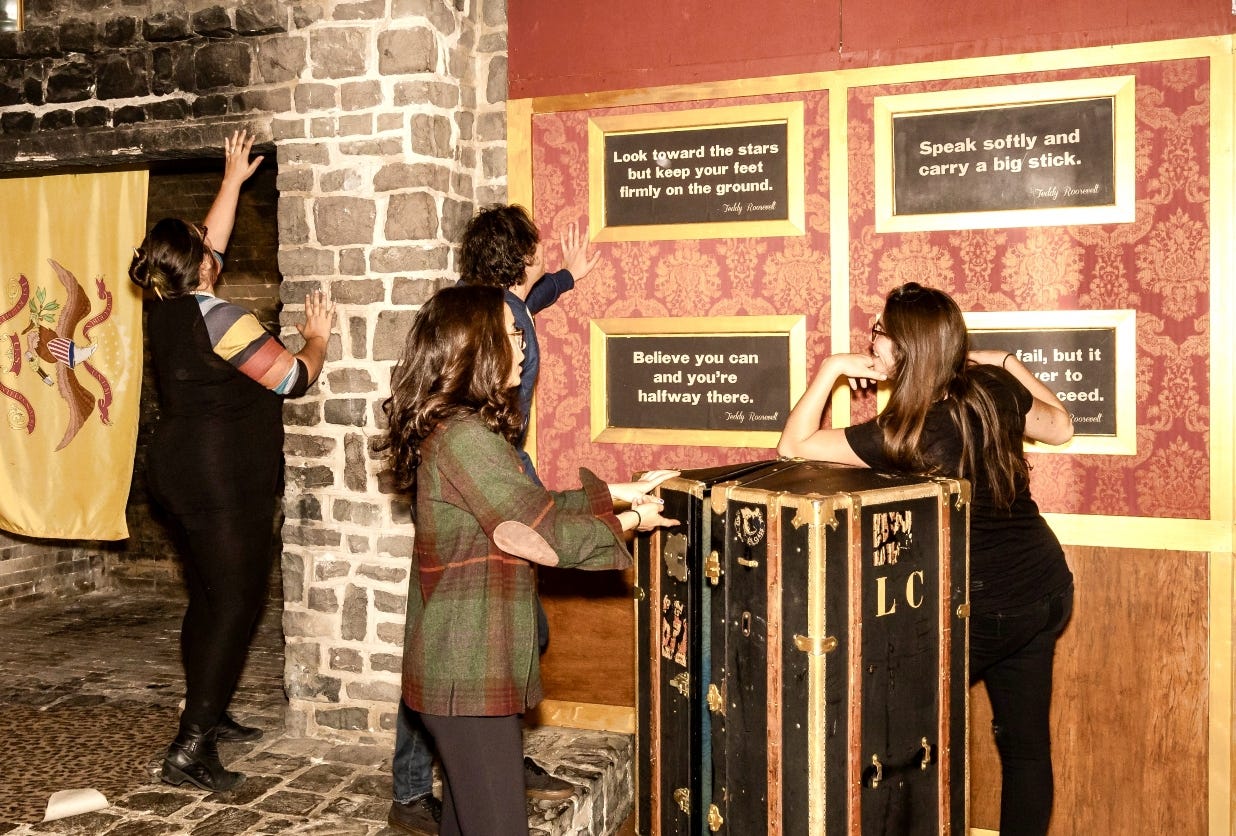
Alden isn’t entirely sure that players appreciate the full narrative; It’s hard to get players, often in fight or flight mode while solving, to appreciate the finer narrative details of a room, particularly ones as chock full of content as the rooms at Palace Games.
“It’s the archetype of most adventures out there,” he said. “There’s a call to action, then you cross the threshold from real world to fantasy, then a challenge, an abyss, overcoming the challenge and the journey home.”
The Attraction goes even harder on narrative, abandoning any historical premise, but fully plunging the player into a sequence of evocative rooms that follow Joseph Campbell’s hero’s journey. “It’s essentially The Divine Comedy but in abstract form,”Alden said. “We developed themes in the room, like free will and the difference between good versus evil.”
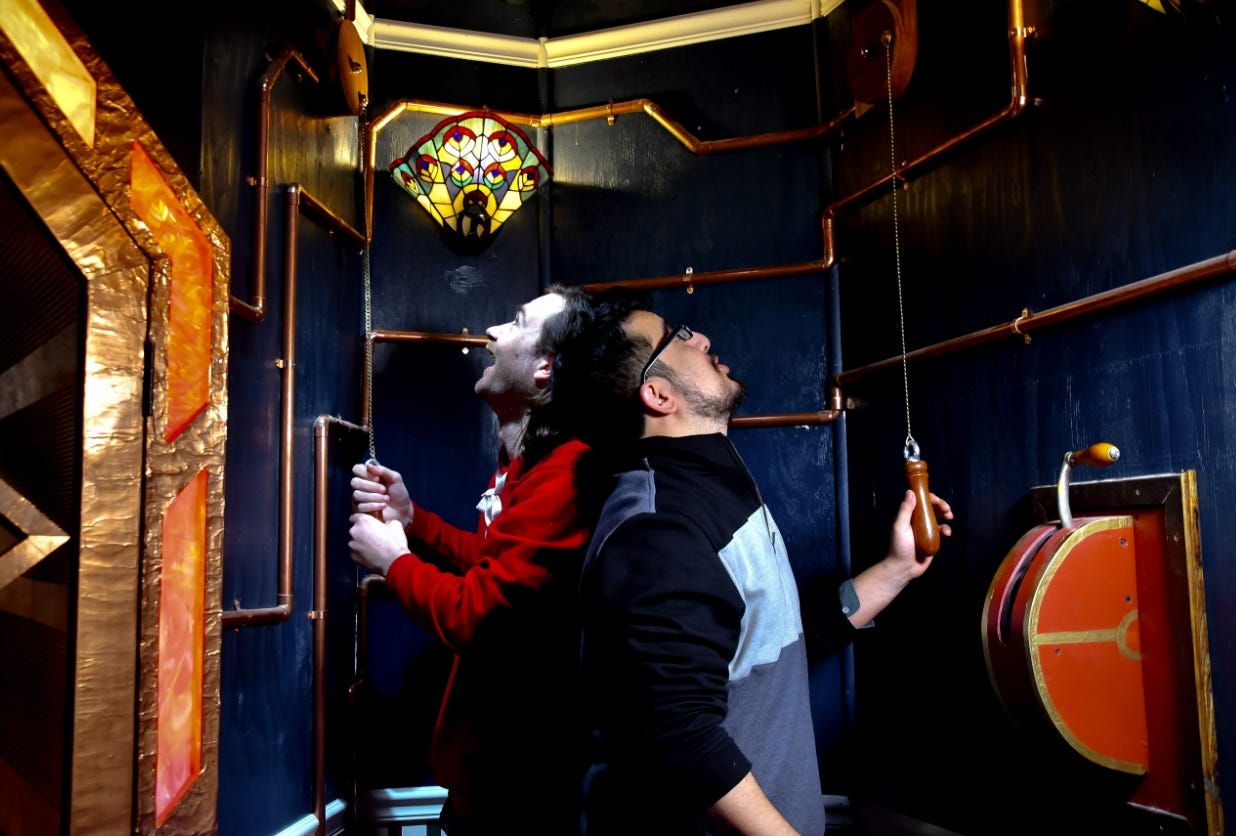
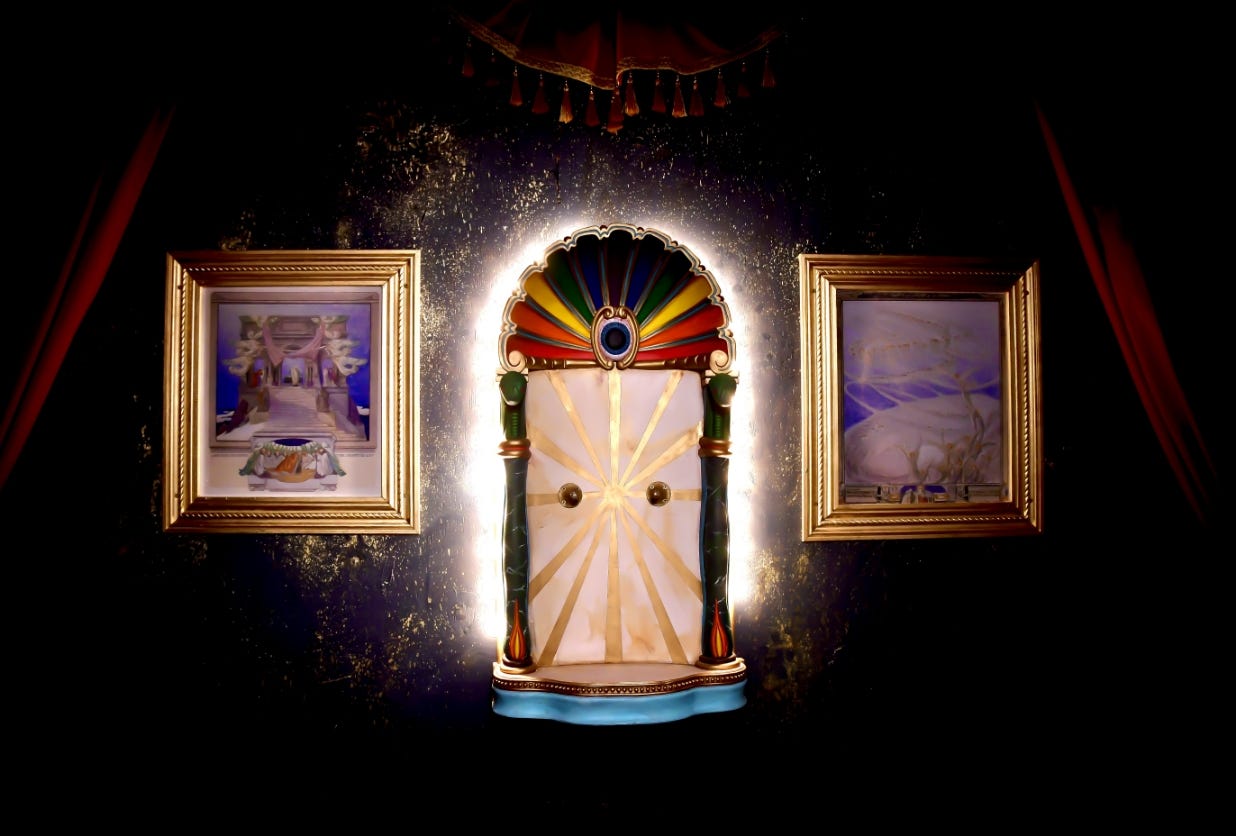
No matter the room you choose, you’re not going to escape by going it alone. Palace Games are all about puzzles that require true collaboration.
The initial puzzle in the Houdini Room and almost everything in the Edison Room requires multiple people physically working in tandem to solve; you literally can’t do it alone. “It’s an intentional design around the one person who is the know-it-all, who wants to run the show. When we design gameplay, we ask ourselves, can someone just take over and say, ‘I got this guys, just watch me.’”
Because if there’s an escape room hell, it’s watching that one pushy coworker solve everything while you just sit there.

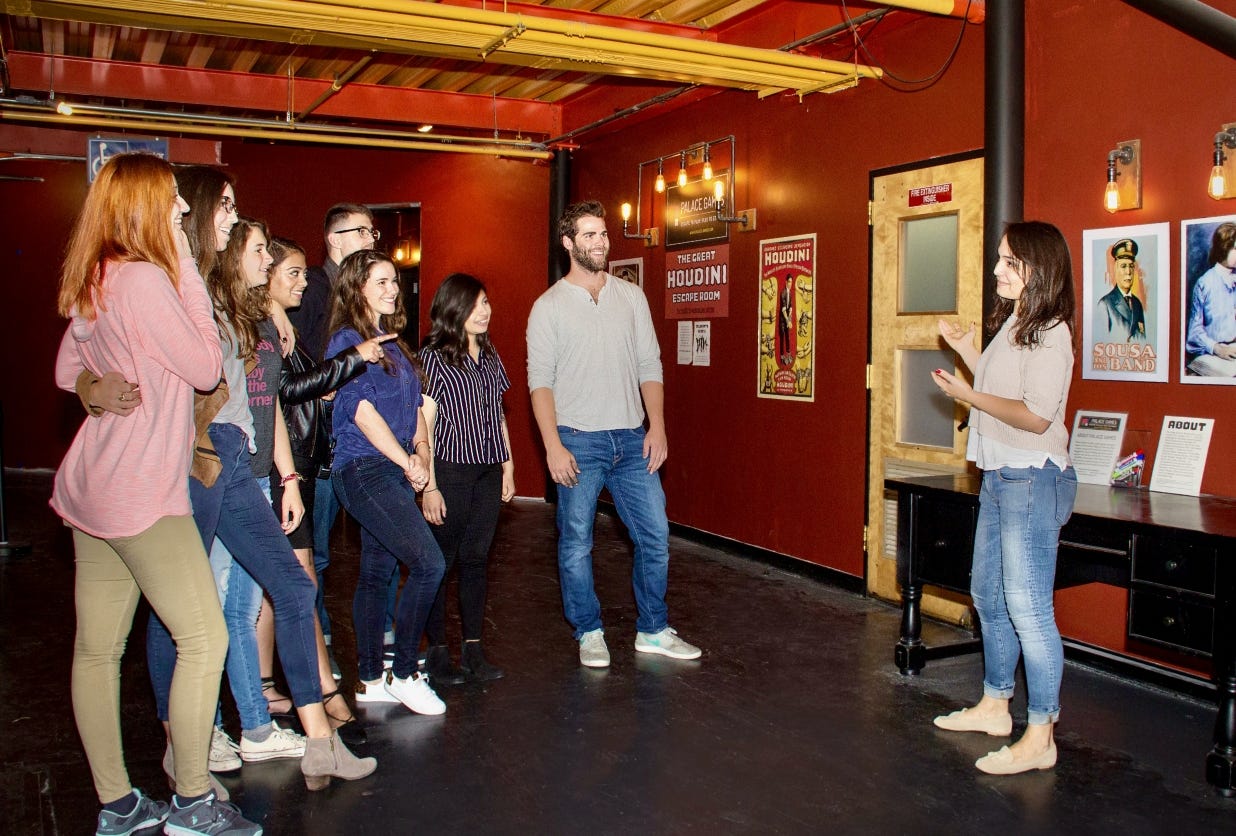
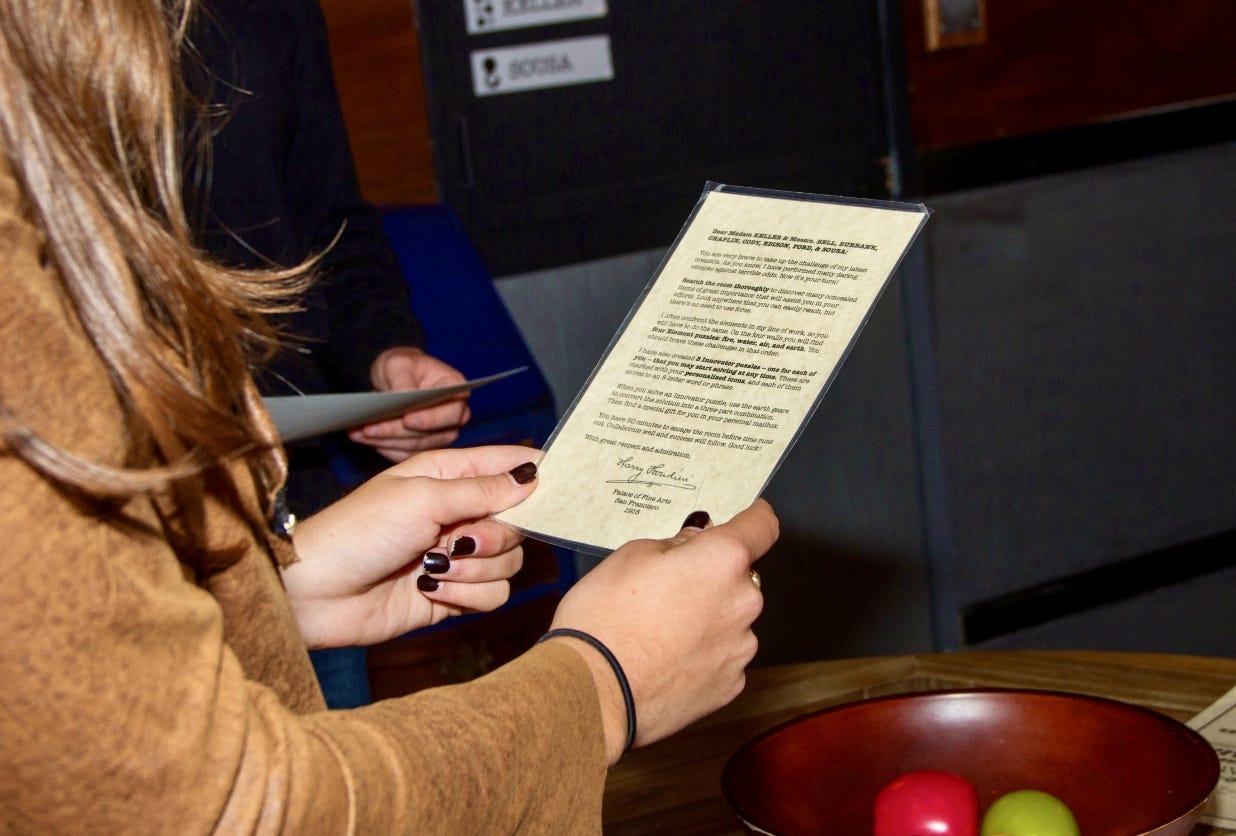
Alden comes from a corporate background and went to one too many mediocre team-building events. Echoes of this background emerge in his design philosophy. He doesn’t just want to exclude the office know-it-all; He wants to create experiences where introverts — often overlooked in the corporate world — can shine. He never played an escape room before building the Houdini Room, which perhaps allowed the Palace Games team to create unique rooms, unburdened by prevailing conventions.
Lollyland, their newest experience, combines mini-golf with puzzle elements. It’s not an escape room; You’ll spend most of your time putting. Palace Games calls it “puzzle-golf” — a blend of puzzles and mini-golf. Lollyland is also more family-friendly, allowing children as young as five.
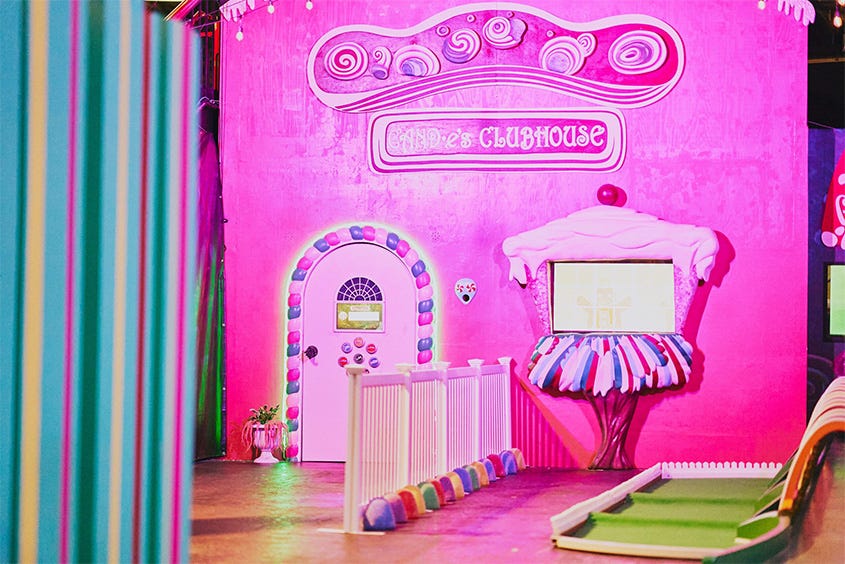
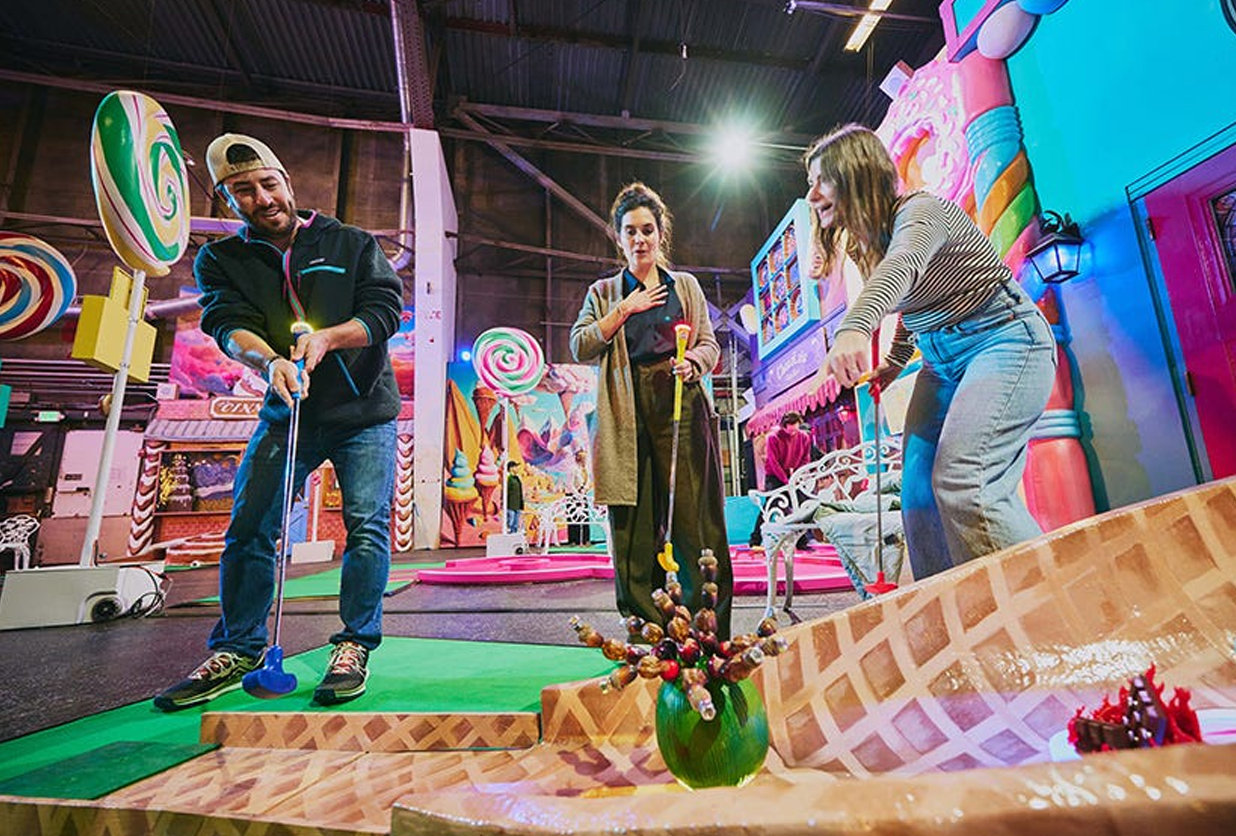
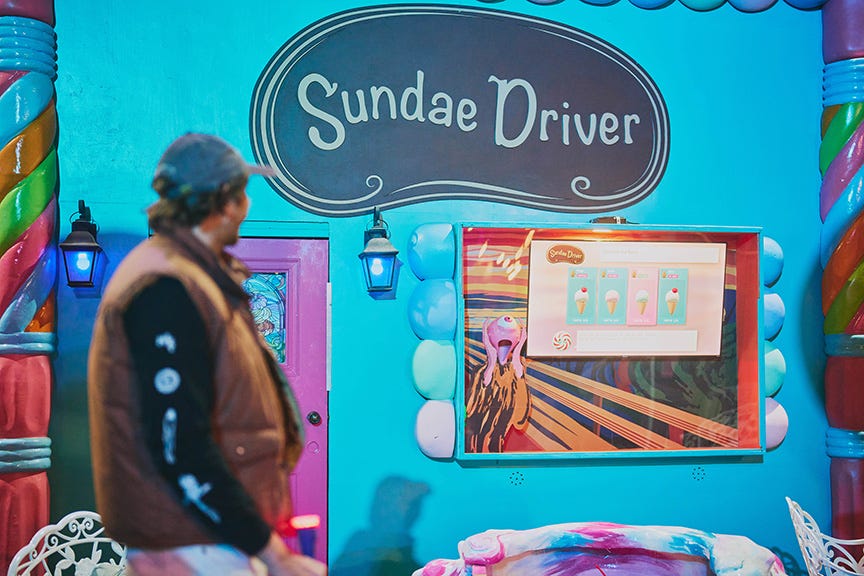
The pandemic was hard on escape rooms, with many closures and a slow recovery. Palace Games adapted with online experiences and developing Lollyland. Nowadays most rooms in San Francisco are part of larger national chains. But Palace Games, along with Reason and EscapeSF, are the exceptions to this. They offer custom rooms only available in The City.
Alden keeps things running by having fun with it.
“I don’t have an ambition beyond letting people have a fun time,” he said. “We are not underserved in terms of unfun things in life. It’s about trying to bring some energy and fun to this city.”
Book a room or game of puzzle-golf at www.palace-games.com. Palace Games recommends teams of 4 to 8 players for their escape rooms and teams of 2 to 6 players for Lollyland.
Jan Chong is a San Francisco-based parent and writer.
The Bold Italic is a non-profit media organization, and we publish first-person perspectives about San Francisco and the Bay Area. Donate to us today.







